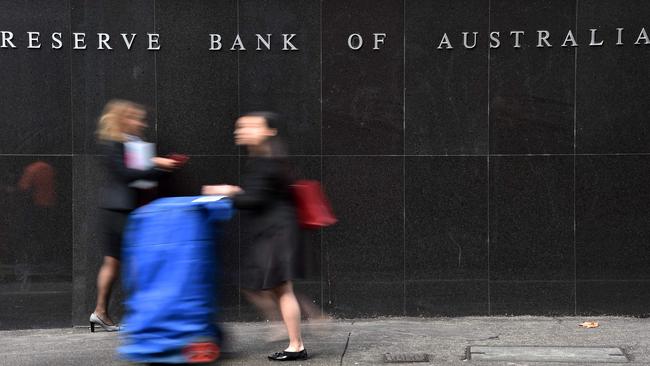Asian banks shrug off fears of apartment slump
Asian banks have almost doubled their share of lending to corporate Australia in the past five years.

Asian banks have almost doubled their share of lending to corporate Australia in the past five years, helping power the commercial property boom that is worrying regulators.
As Citi last week ceased interest-only mortgage lending to some customers, the Reserve Bank warned that the mostly healthy banking system was vulnerable to property development loan losses if “apartment markets in some cities were to turn down and settlement difficulties became widespread”.
The RBA said risks in the $1.6 trillion mortgage market had risen, citing falling apartment prices and higher vacancy rates in oversupplied pockets of Melbourne and Brisbane.
Noting the Australian Prudential Regulation Authority’s recent move to curb “higher risk” interest-only lending, the RBA added that developers were suffering settlement delays and valuations falling below contracted purchase prices. In the office commercial property market, vacancy rates were “elevated” in Brisbane and Perth.
Despite the growing risks in the property market and collapse of the mining investment boom in recent years, the RBA found foreign banks have continued to raise their exposure to Australia, almost entirely driven by Asian banks. Since 2012, Asian banks including majors from China and Japan have increased their share of business credit supply from about 6 per cent to 11 per cent.
“Their increased lending has been spread across industries, most notably infrastructure and commercial property,” the RBA said.
“While foreign banks have long been active in providing such specialised lending, their activity in Australia has historically been highly pro-cyclical and has tended to exacerbate asset price and economic cycles.”
The RBA’s findings suggest foreign banks may play a role in extending cycles by financing business when mainstream loan sources — such as from the bigger domestic banks — dry up.
Credit Suisse analysts estimate foreign bank commercial real estate lending increased 56 per cent in the year to September, far faster than the broader market’s 9 per cent rise.
While APRA data does not strip out individual bank commercial property lending, Credit Suisse found many of the largest foreign banks were increasing corporate lending at “robust” double-digit rates. These included Sumitomo Mitsui, Industrial and Commercial Bank of China, China Construction Bank and DBS.
In the consumer mortgage market tied to the health of apartment developments, banks are rapidly adjusting their appetite.
Citi on Thursday became the latest lender to adjust policies, citing “changes in regulatory and market conditions” for its immediate halt to interest-only loans for non-residents and borrowers using owner-occupied property as security.
The change means Citi will only write interest-only loans for residents using investment property as security with deposits of at least 20 per cent.
While interest-only loans are commonly used by investors who can leverage tax concessions, banks have been recently trying to provide incentives to owner-occupier borrowers to pay down a loan’s principal by pricing them cheaper than interest-only deals.
“Interest-only lending has the potential to increase households’ vulnerability,” the RBA said, noting about 23 per cent of owner-occupiers and 64 per cent of investors used these riskier loans. The RBA also found a third of total mortgage borrowers had accrued less than one month’s repayment “buffer”, a concern should job losses rise.
APRA last month stepped in and ordered banks to cap interest-only lending at 30 per cent of flows and keep investment lending growth below 10 per cent, saying this would ease risks while also allowing banks to absorb the “increasing supply of newly completed construction”.
Apartment building approvals rose a further 11 per cent in February, despite near record levels of home building.
Credit Suisse’s analysis of APRA data suggests foreign banks have assisted in the funding of the apartment boom, growing their share of commercial property lending to 14.5 per cent by December, up from 8.4 per cent in June 2013.
In contrast, the Australian major banks — Commonwealth Bank, Westpac, ANZ and National Australia Bank — have ceded share, falling to 79.7 per cent, amid fears of a growing apartment glut in parts of Melbourne and Brisbane.
The assault by foreign banks on the Australian corporate lending market has coincided with a pullback by domestic lenders in the institutional market due to margin pressures, which they have partly blamed on greater competition.
But for Asian banks with access to cheap capital, Australia looks relatively appealing.
“Margins are already much tighter (in Asia), so for us in Australia the squeeze on margins is still better than margins at home,” DBS chief executive Piyush Gupta said in 2015 at the group’s branch launch in Sydney.
In contrast, European lenders’ slice of the market has shrunk since the global financial crisis amid capital constraints.



To join the conversation, please log in. Don't have an account? Register
Join the conversation, you are commenting as Logout